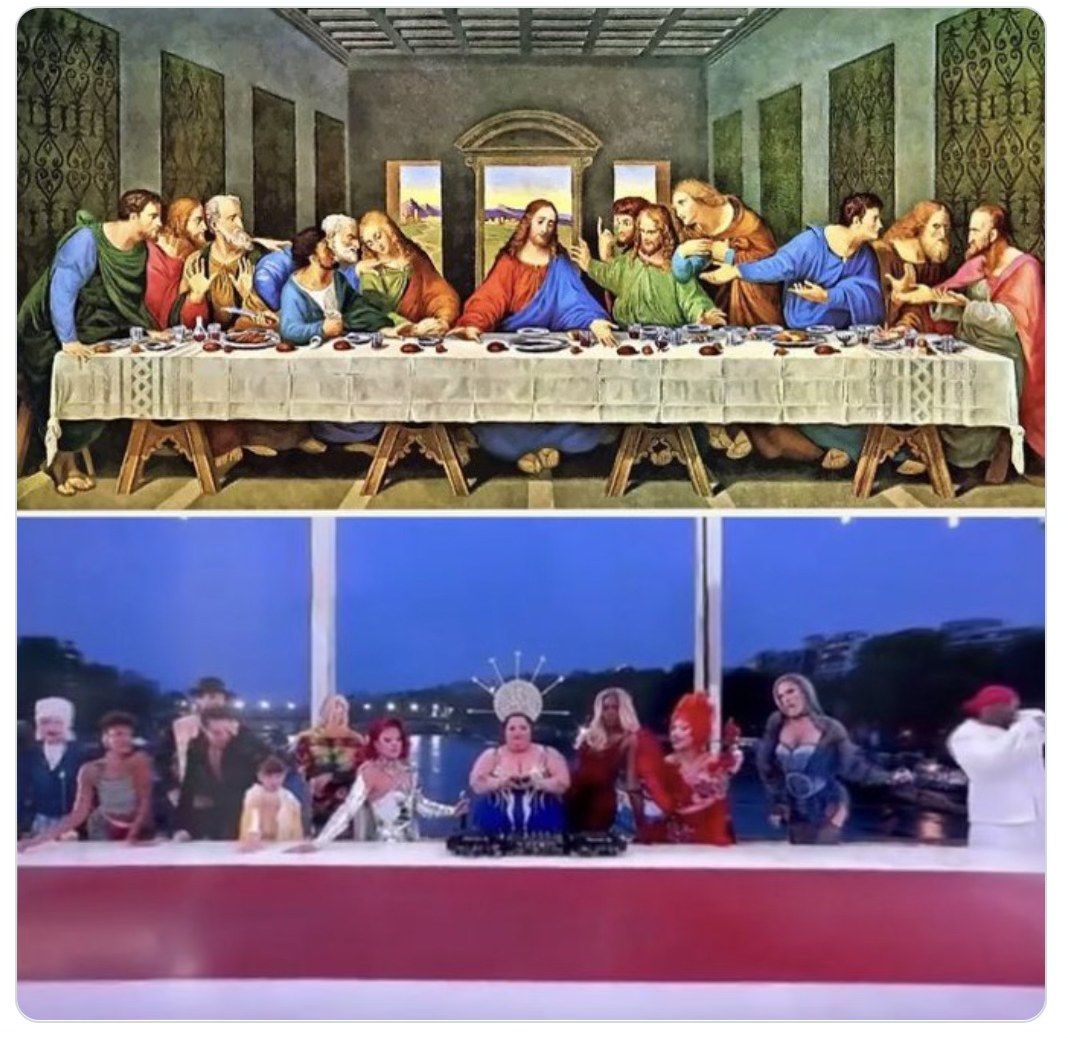The Olympic Ceremony and the Last Supper Controversy
Fooooof – what looked like a parody of “The Last Supper” during the Olympic opening ceremony has caused a Cyclone Carol of comments on social media, especially here where people looooove commenting. But, in a couple of days, this will leave PR and Crisis Comms students with a great case study!
First of all, at such an international level, whether the creators were inspired by “The Last Supper” or another painting, I humbly think that it’s a PR mistake. It’s hard to believe none of them – authors, organizers, artists – noticed the resemblance, especially since some participants thought it was indeed inspired by “The Last Supper,” according to various interviews. At this level of visibility, celebrating diversity in troubled times means every single detail is crucial. So does it mean that if the creators genuinely didn’t notice the resemblance, they could have ooooopsed again and included a scene that looked like it came from the Torah, the Bhagavad Gita, or the Quran? Attention to critical details was surely part of someone’s job at that level of visibility? So, for me, it’s a red card for not noticing the resemblance, not anticipating this reaction, or choosing to ignore its possibility.
Secondly, by early Saturday morning, before the French bishops’ statement condemning this part of the ceremony, I hadn’t seen any attempt by the organizers to clarify their choice of the second painting as the inspiration, without waiting over 24 hours. This late explanation seems like a weak attempt to tap dance out of the crisis. I also don’t understand, while applauding the freedom given, why in the face of a big crisis, they didn’t coordinate with the other participants to speak to the media with one voice and one explanation. Red card as far as I am concerned, even if I know how super super difficult it is to cover all areas when you are in the middle of a cyclone.
Also, even if the second painting explanation is legitimate, I just reread a study from one of Maluti’s partners, FTI Communications. They did a survey on the “Cost of Not Saying Sorry” during a reputation crisis. I often clash with lawyers who, 99.9% of the time, advise our clients not to apologize in any form even if they obviously did wrong. FTI showed that a sincere and timely apology is often positive in terms of crisis management. It’s not enough, but out of 1,200 companies in crisis that were part of FTI’s study, 59% of the targeted publics were satisfied with a timely apology, helping to diffuse their anger. 59% is more than half, and it shows that saying a timely sorry can be part of the kit of effective tools in a crisis, when it is legitimate.
Lastly, a big red card goes to those who used this controversy here to vent their anger and frustrations through violent comments on social media. And my biggest red card goes to the local provocateurs who enjoy stirring the pot.
Bottom line: Here we are again, dealing with the famous freedom that France loves, but like the rest of the free world, can’t always manage without missteps, big and small.




